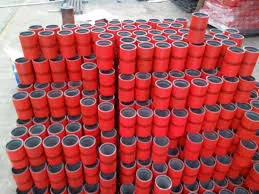- Afrikaans
- Albanian
- Amharic
- Arabic
- Armenian
- Azerbaijani
- Basque
- Belarusian
- Bengali
- Bosnian
- Bulgarian
- Catalan
- Cebuano
- Corsican
- Croatian
- Czech
- Danish
- Dutch
- English
- Esperanto
- Estonian
- Finnish
- French
- Frisian
- Galician
- Georgian
- German
- Greek
- Gujarati
- Haitian Creole
- hausa
- hawaiian
- Hebrew
- Hindi
- Miao
- Hungarian
- Icelandic
- igbo
- Indonesian
- irish
- Italian
- Japanese
- Javanese
- Kannada
- kazakh
- Khmer
- Rwandese
- Korean
- Kurdish
- Kyrgyz
- Lao
- Latin
- Latvian
- Lithuanian
- Luxembourgish
- Macedonian
- Malgashi
- Malay
- Malayalam
- Maltese
- Maori
- Marathi
- Mongolian
- Myanmar
- Nepali
- Norwegian
- Norwegian
- Occitan
- Pashto
- Persian
- Polish
- Portuguese
- Punjabi
- Romanian
- Russian
- Samoan
- Scottish Gaelic
- Serbian
- Sesotho
- Shona
- Sindhi
- Sinhala
- Slovak
- Slovenian
- Somali
- Spanish
- Sundanese
- Swahili
- Swedish
- Tagalog
- Tajik
- Tamil
- Tatar
- Telugu
- Thai
- Turkish
- Turkmen
- Ukrainian
- Urdu
- Uighur
- Uzbek
- Vietnamese
- Welsh
- Bantu
- Yiddish
- Yoruba
- Zulu
Guidelines for Tubing and Casing Specifications in Oil and Gas Drilling
Understanding API Tubing and Casing Charts A Comprehensive Guide
In the oil and gas industry, ensuring the integrity and efficiency of wells is paramount. One of the critical components that assist engineers and field operators in this endeavor is the American Petroleum Institute (API) tubing and casing charts. These charts provide essential guidelines and specifications for the various types of tubing and casing used in drilling operations and are crucial for the construction and maintenance of oil and gas wells.
What Are Tubing and Casing?
Before delving into the charts, it’s important to understand what tubing and casing are. Casing is a series of steel pipes that are inserted into the drilled borehole, serving to protect the wellbore from corrosion, prevent the collapse of the well, and separate different zones within the formation. Tube, on the other hand, is installed within the casing to facilitate the flow of hydrocarbons to the surface. Tubing is usually smaller in diameter than casing and is designed to withstand higher pressures while maintaining flow efficiency.
Importance of API Standards
The API establishes standards to ensure the reliability and safety of products used in the oil and gas industry. API tubing and casing charts provide detailed specifications regarding the dimensions, weights, strengths, and other critical properties of these components. By following these standards, operators can ensure compatibility in the field and maintain the structural integrity of the well throughout its lifecycle.
Key Components of API Tubing and Casing Charts
1. Designations and Sizes The charts begin with a list of designations that categorize different types of tubing and casing, including size specifications. Sizes are typically denoted in inches, with the most common tubing sizes ranging from 1 1/2 inches to 4 1/2 inches in diameter.
api tubing and casing chart

2. Weight per Unit Length The charts provide important information on the weight of the tubing or casing per unit length, typically measured in pounds per foot. This is crucial for determining the load that the installation and related equipment must support.
3. Yield Strength Yield strength, the point at which a material begins to deform permanently, is a critical factor in selecting the appropriate tubing or casing for a specific well. The API charts provide values for different grades of steel, allowing engineers to choose materials that can withstand the unique pressures and stresses of the drilling environment.
4. Burst and Collapse Pressure Tubing and casing must withstand varying pressures, both from the fluids within and external forces. The API charts detail the estimated burst and collapse pressures that different pipe grades can endure, informing engineers of the safe operating limits.
5. Corrosion Resistance In many environments, including subsea or sour gas wells, materials are prone to corrosion. The charts can provide insights into the corrosion-resistant properties of various grades of tubing and casing, assisting in the selection of appropriate materials to enhance longevity.
Applying API Tubing and Casing Charts in the Field
Operators should interpret the API charts by considering the specific conditions of their drilling site, including temperature, pressure, and the chemical properties of the fluids present. Selecting the right tubing and casing not only ensures the safe transport of hydrocarbons but also reduces maintenance costs and enhances the overall efficiency of the drilling operation.
Conclusion
API tubing and casing charts are invaluable tools for professionals in the oil and gas industry. By providing standardized specifications for various types of tubing and casing, these charts facilitate informed decision-making and enhance the safety and efficiency of drilling operations. Understanding and utilizing these specifications is crucial for the successful construction, operation, and maintenance of oil and gas wells. Through adherence to API standards, operators can minimize risks and optimize their drilling performance, ultimately contributing to the successful extraction of vital energy resources.
-
Tubing Pup Joints: Essential Components for Oil and Gas OperationsNewsJul.10,2025
-
Pup Joints: Essential Components for Reliable Drilling OperationsNewsJul.10,2025
-
Pipe Couplings: Connecting Your World EfficientlyNewsJul.10,2025
-
Mastering Oilfield Operations with Quality Tubing and CasingNewsJul.10,2025
-
High-Quality Casing Couplings for Every NeedNewsJul.10,2025
-
Boost Your Drilling Efficiency with Premium Crossover Tools & Seating NipplesNewsJul.10,2025







